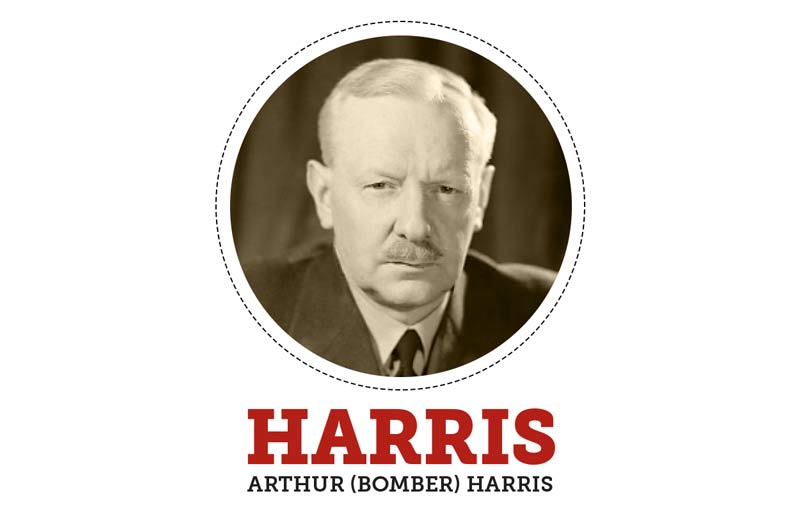
The night of May 30-31, 1942, some 1,040 bombers attacked Cologne in the largest Royal Air Force Bomber Command raid on Germany to date. A few days later, Air Marshal Arthur (Bomber) Harris declared his intention to cripple Germany’s war machine through massive bombardment.
“The Nazis entered this war under the rather childish delusion that they were going to bomb everyone else, and nobody was going to bomb them,” said Harris. “There are a lot of people who say that bombing can never win a war…well…it has never been tried…and we shall see.”
German Armaments Minister Albert Speer confessed RAF accuracy was such that the raids severely cut production
The Americans soon initiated daylight bombing operations, while Bomber Command focused on nighttime raids. Harris predicted the Allies would unleash a “storm…over Germany…It may take a year. It may take two. But for the Nazis the writing is on the wall.”
It was not until March 1943, however, that Bomber Command had sufficient strength to undertake a protracted campaign. The target was the Ruhr valley, Germany’s largest centre of heavy industry and coal mining. In the spring of 1943, one-third of all anti-aircraft guns in Germany were concentrated in the Ruhr and a large number of the Luftwaffe’s approximately 550 night fighters were deployed for its defence.
“For the Nazis,
the writing is
on the wall.”—Air Marshal Arthur (Bomber) Harris
The campaign began on March 5 when some 400 aircraft attacked the central Ruhr city of Essen. Mosquito Pathfinders deployed new radar technology and used flares to pinpoint bomb-drop marking points, enabling the attackers to see through the smog. Up to 83 per cent of payloads are said to have struck the targeted Krupp armament complex. Still, nighttime raids always entailed area bombing. More than 5,000 Essen homes were demolished, and about 450 civilians killed. Fourteen bombers were lost.
From March 5 to the last operation on July 13-14, Bomber Command conducted 22 raids on the Ruhr. Each involved hundreds of aircraft with more than 30,000 tonnes of bombs dropped in total. German armaments minister Albert Speer confessed RAF accuracy was such that the raids severely cut production of steel, aircraft and other essential materiel.
Bomber Command’s losses of 872 aircraft shot down, another 2,126 damaged and about 5,000 British and Commonwealth aircrew killed, forced Harris to end the campaign in mid 1943. Harris claimed a victory. This, he warned, was just the beginning of a prolonged Allied campaign that would lay waste to Germany’s cities, industrial complexes and transportation networks.

September 1939, chairman of the Reich defence council Hermann Göring spoke to a Luftwaffe assembly. Britain and France, having declared war on Germany, could potentially bomb the Ruhr’s industrial heartland. Göring brushed off the threat.
“No enemy bomber can reach the Ruhr…If one reaches the Ruhr, my name is not Göring. You can call me Meyer,” he said of the common German name.
Göring went on to promise: “I shall see to it that the enemy will not be able to drop any bombs.”
By early 1943, Göring’s assurances of Luftwaffe invincibility and that German cities and industrial complexes were safe from bombing had been discredited by the RAF Bomber Command raids that started in earnest in the fall of 1940.
Still, Bomber Command wasn’t strong enough and its focus on targeted bombing too inconsequential to hamper German war production. On Feb. 14, 1942, Britain’s Air Ministry adopted a new strategy—area bombing. Eight days later, Harris became Bomber Command’s air marshal. He wholeheartedly embraced area bombing, which aimed not only to destroy Germany’s ability to wage war, but—according to an Air Ministry directive—to also shatter the “morale of the enemy civil population and in particular, of the industrial workers.”
The Ruhr campaign was this strategy’s first full implementation. Germany’s air and ground defences proved incapable of stopping the hundreds of bombers from causing extensive destruction. By the summer of 1943, 60 per cent of all anti-aircraft guns in Germany were concentrated in the Ruhr, along with hundreds of searchlights, and the majority of Göring’s night fighters. Yet, despite climbing losses, the bombers continued to get through.
Despite climbing losses, the bombers continued to get through.
In the aftermath, Hitler was furious with Göring. Germany’s high command recognized the only way to stop Bomber Command and the soon to be unleashed American daylight bombing campaign was through offensive operations against bases in Britain. Destroy these and the bombing might cease. Yet, such action was beyond Luftwaffe capability.
Finally, Göring shifted the blame for the Allied ability to strike deep inside the Reich to his fighter pilots, accusing them of cowardice. Hitler, meanwhile, sought retaliation by unleashing V-1 and V-2 rockets to rain terror on Britain rather than increasing fighter production to regain air superiority over German skies. This left the Luftwaffe incapable of preventing Germany from being ravaged by the Allied bombing campaign.
“I shall see to it
that the enemy
will not be able to drop any bombs.”—Hermann Göring
Advertisement





















